New Conservation Treatment for the Magnificent Whitney Monument
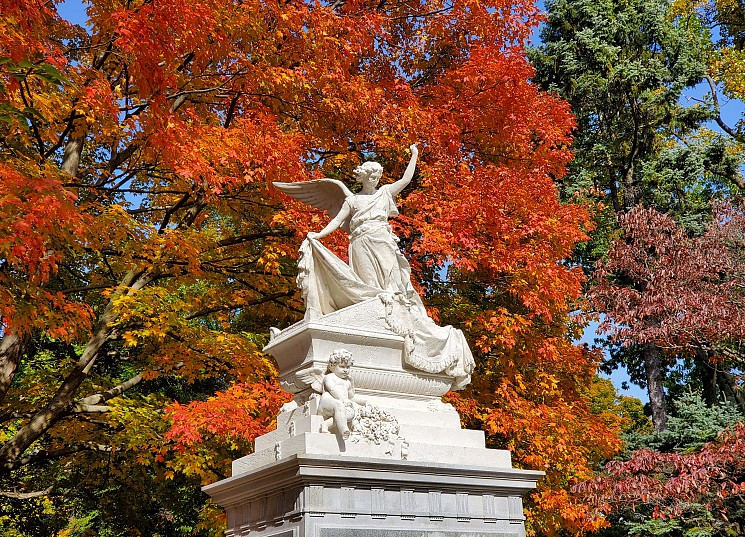
On a beautiful October day, conservators completed treatment of the magnificent 1883 Whitney Monument on Oriole path in Mount Auburn. It was perfect timing. The twenty-two-foot-high monument created by Italian sculptor Nicola Cantalamessa-Papotti was set off by a background of vibrant orange and gold leaves of the nearby sugar maple.
Conservators from Daedalus Inc. had assessed the condition of the Whitney Monument, designated as one of Mount Auburn’s thirty most significant monuments, as a top priority for treatment. Viewed from a distance, the memorial appeared to be in better shape than it was, but closer inspection revealed an alarming degree of degradation.
The marble surface, once smooth and lustrous, contained an extensive network of fine cracks, larger fissures, and even deeper vertical cracks. In addition, the surface showed signs of disaggregation, the loss of cohesion between the grains of the stone that over time had created a highly eroded surface of dramatic bumps and ridges. Typical of monuments in an outdoor environment, the entire exposed surface was heavily soiled with areas of green algae and decayed lichen. Black crusts of gypsum leaching from the marble appeared in the recesses and protected areas of the white marble, especially in the deep folds of the drapery and in the flowers. Sadly, extensive losses dating from the early 20th century included the angel’s left wing and hand, and the little foot of the putto (cherub figure).
Daedalus Inc. conservator Joshua Craine, Mount Auburn’s Vice-President of Preservation and Facilities Gus Fraser, and Curator Meg Winslow had to determine the best method of treating the severely eroded marble. They made the decision to wash and stabilize the monument, but not to undertake additional restoration of elements such as the wing and the foot. Most significantly, the team chose to apply a shelter coat to protect the surface of the monument: the first time a treatment of this kind would be attempted at Mount Auburn.
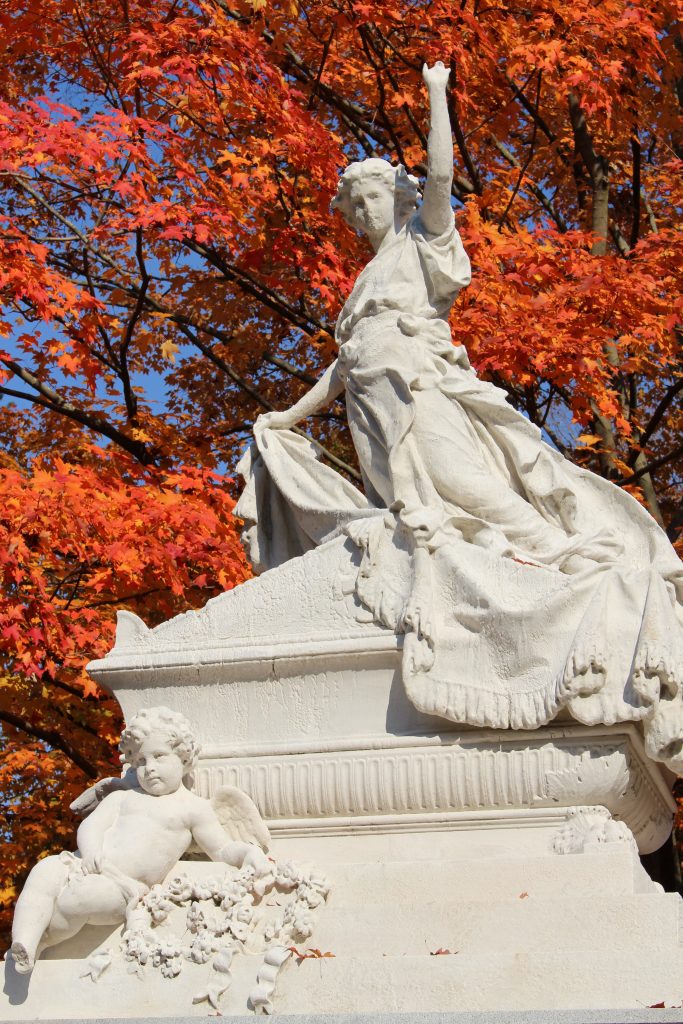
The shelter coat is a mix of hydraulic lime mortar with very fine aggregate, diluted with water and tinted to match the marble color of the monument. The fine aggregate included in the mix binds with the lime, creating a matrix that enhances both permeability and durability. The mix is applied with a brush, and when cured, results in a breathable coating that is sacrificial in nature, meaning that over time it, and not the original surface of the monument, will erode. Mixing, applying, and curing the coating requires time and skill, but “as long as it’s done properly, it’s totally reversible and re-treatable,” explains Craine.
“The severely eroded condition of the monument prompted the team to consider a sacrificial shelter coat to protect the surface rather than a more invasive approach of a chemical consolidant,” says Fraser. “With Josh’s continued help, we will monitor the condition of the coating and retreat as necessary.”

Prior to applying the shelter coat, the entire monument was carefully washed to remove biological growth and atmospheric staining. Craine removed the areas of gypsum crust with a hand-held laser, instead of chemicals or brushing. After cleaning the monument, he applied the protective shelter coating with a thick, sash brush, daubing it on to fill the recesses of the sculpture and create an even coat. The grit included in the mixture helped the coating adhere to the surface and recede into the grooves of the carving.
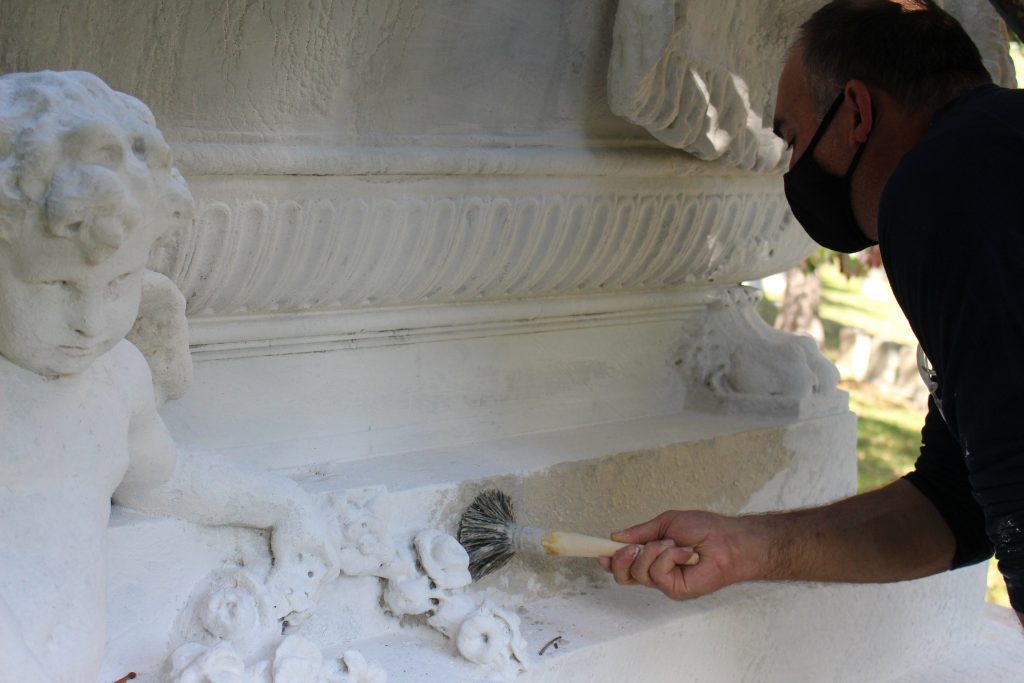
The treatment required wrapping the monument in a layer of canvas and then in a sheet of plastic to protect the coating and ensure a proper cure. Once or twice a day, Craine removed the extensive wrapping to inspect the progress and fill areas that still needed coating. “The art,” explains Craine, “is knowing when to stop.” Coating the sculpture, touching it up, and keeping it wet proved time consuming and occurred over the course of five to six days. Fortunately, the work took place under clear skies and low humidity.
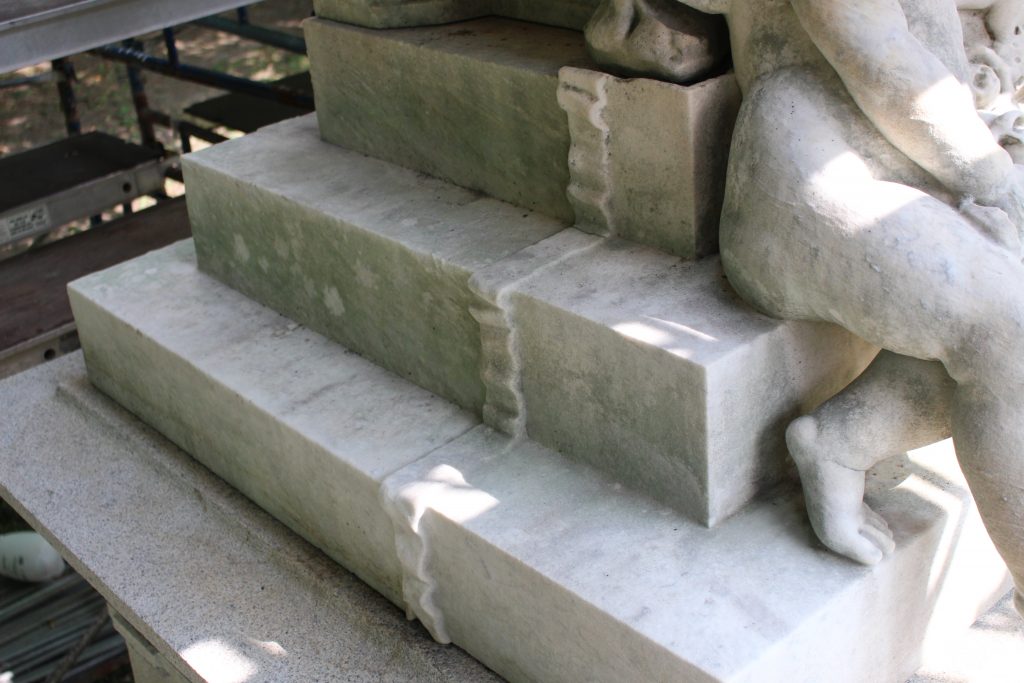
The color now appears creamy and bright, especially when compared to the condition before treatment, but similar to other marble monuments at Mount Auburn that have recently been washed. “There’s trepidation with every conservation project, even when working with the most skilled conservator like Josh,” explains Winslow, “so you can imagine we’re thrilled to see the results of the project. In the early morning light, the Whitney monument just takes your breath away.” Craine concludes, “We’ve saved it to some degree and given it a bit more life.” Viewed from a distance, the spirit and uplifting movement of the monument remains intact.
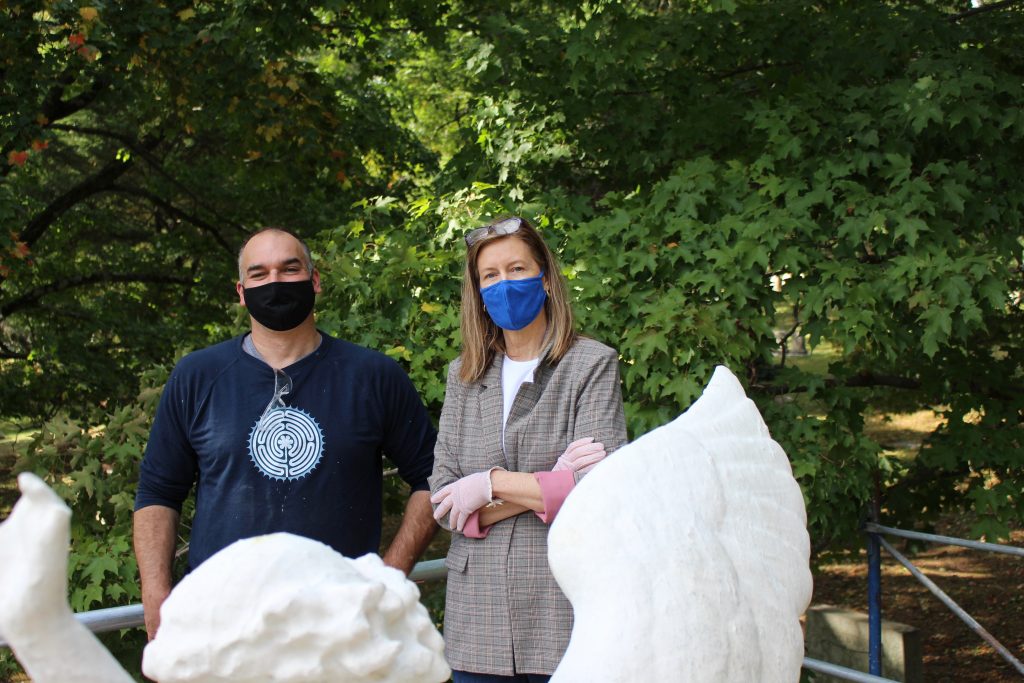
Learn more about the Whitney Monument, the artist Nicola Cantalamessa-Papotti, and the Whitney family.
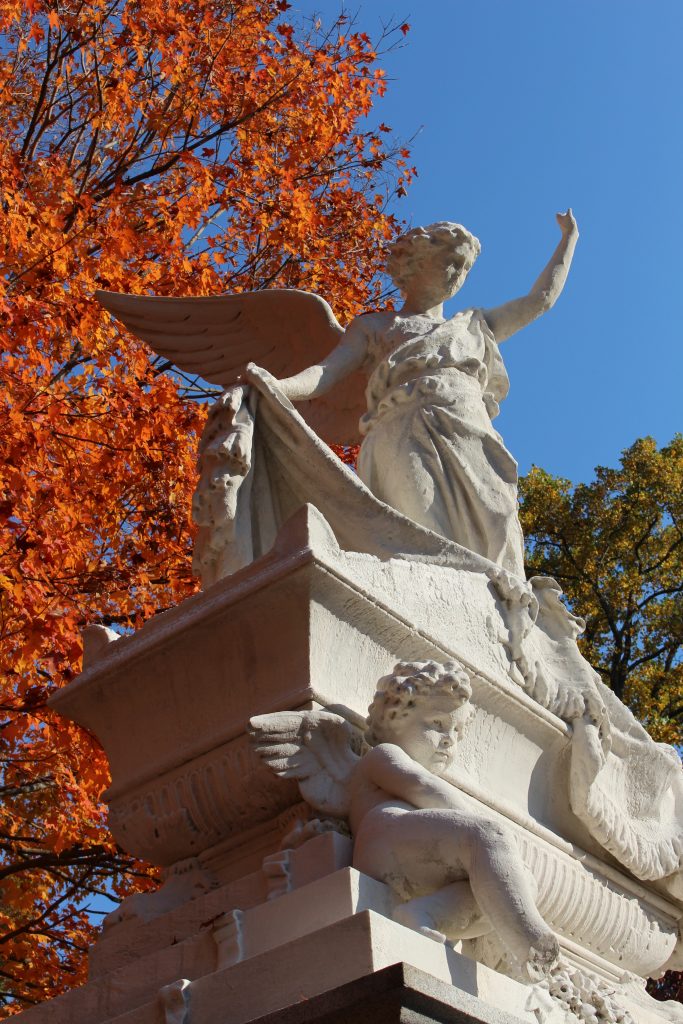






Leave a Reply